Clancy Tucker's Blog, page 190
April 21, 2017
22 April 2017 - LEONARDO da VINCI

LEONARDO da VINCI
G'day folks,Leonardo di ser Piero da Vinci, more commonly Leonardo da Vinci or simply Leonardo, was an Italian polymath whose areas of interest included invention, painting, sculpting, architecture, science, music and astronomy.
Leonardo da Vinci (1452 – 1519) is one of the world’s greatest thinkers, artists and philosophers. In several different fields, from science to astronomy, he proved to be both innovative and several centuries ahead of his contemporaries. He is considered to be a key person in the birth of the European Renaissance period, which saw a flowering of new ideas, scientific discoveries and creation of beautiful art.
Leonardo was born an illegitimate son of a Florentine noble and peasant woman and grew up in Vinci, Italy. In his formative years he developed a love of nature and from an early age displayed his remarkable academic and artistic talents and capacities.
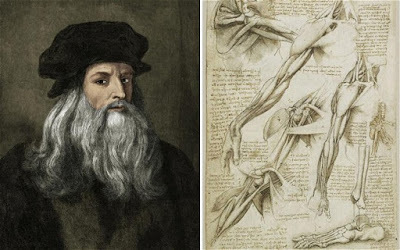
In 1466 he moved to Florence where he entered the workshop of Verrocchio. His early style reflected his teacher, but he soon developed an artistic sense which went far beyond his teachers rigid style. His first work of great significance was the “Adoration of the Magi” commissioned by monks of San Donato a Scopeto. Although unfinished, the work was a masterpiece and introduced several new ideas. In particular he introduced the themes of movement and drama. He also pioneered the use of Chiaroscuro. This is the technique of defining forms through the contrast of light and shadow. This would be later used to great effect in the Mona Lisa.

In 1482 Leonardo went to the court of Ludovico Sforza for 16 years in Milan. Here he continued painting and also branched out into other interest such as engineering and anatomy. During this period he painted the famous “Madonna on the Rocks” and also “the Last Supper” This has been described as one of the greatest spiritual paintings. With Christ at the centre of the picture it embodies great feeling and action as Christ is about to announce his imminent betrayal. Unfortunately over the time the quality of the original painting has deteriorated despite frequent restoration attempts.

In 1499 his patron L. Sfoza was defeated by the French invasion, thus Leonardo returned to Florence. During this period he painted the fresco of the battle of Anghiari. This artwork was to exert tremendous influence over future artists. However it was unfortunately never completed and was later destroyed. It was also in this period that Leonardo completed The Mona Lisa.
The Mona Lisa is one of the worlds most famous and intriguing pictures. The Mona Lisa is a portrait of a wife of a Florentine noble. For several days she came to Leonardo and sat for her portrait to be painted. However she refused to smile, Leonardo even tried hiring musicians but to no avail. One day just for a fleeting second she gave a faint smile and Leonardo was able to capture it. Her smile encapsulates a tremendous mysteriousness which is both fascinating and intriguing.

Between 1506-1510 Leonardo spent time in Milan working on behalf of the very generous French King Lois XII. In 1513 he travelled to Rome where he enjoyed the patronage of the new Medici pope, Leo X. Here he worked with contemporaries such as the great Masters Michelangelo and Raphael. In 1515 he left to settle at the castle of Cloux, near Amboise by the kind invitation of Francis I of France. Here he spent his last years free to pursue his own studies. He died in 1519 leaving behind one of the greatest body of artistic and scientific works.

Clancy's comment: One smart man. Wow, 780 million dollars for the Mona Lisa!
I'm ...


Published on April 21, 2017 14:05
April 20, 2017
21 April 2017 - ANIMALS AND HUMOUR
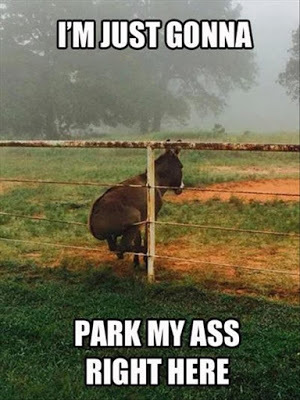
ANIMALS AND HUMOUR
G'day folks,
Our pets often make us laugh. Having said that, check out these funny characters.
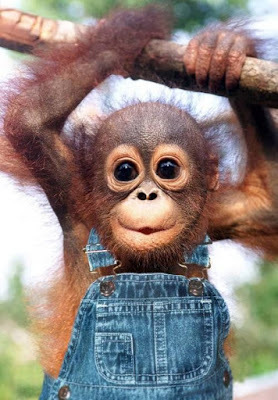
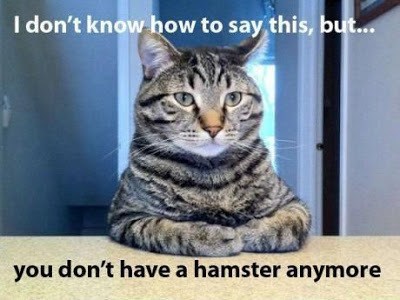




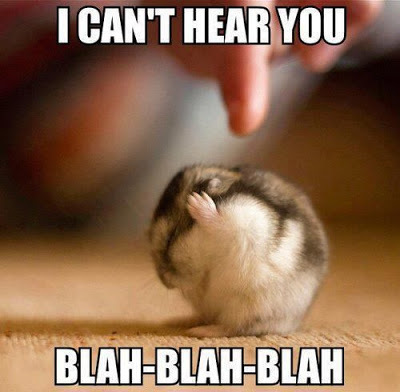
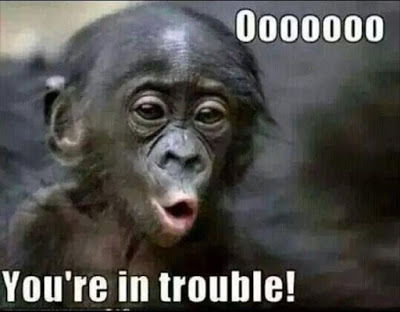

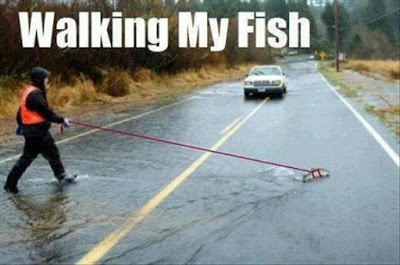



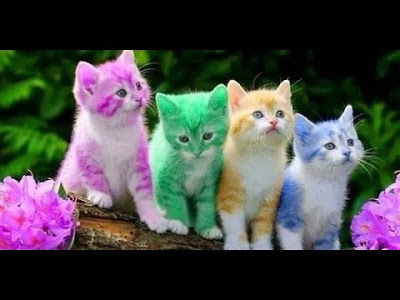

Clancy's comment: I hope these made you smile.
I'm ...


Published on April 20, 2017 15:20
April 19, 2017
20 April 2017 - FAMOUS AUTHORS REJECTED

FAMOUS AUTHORS REJECTED
G'day folks,
The revered sage Frank Sinatra once said, "The best revenge is massive success."
He never spoke a truer word, particularly when it comes to aspiring authors who, after suffering severe smackdowns from publishers, went on to become renowned writers.
Think this has happened to only a select few? Guess again. Cast your eye upon this list of Cinderella authors (and the nasty little notes publishers sent them) and savor the taste of their sweet, sweet revenge.
1. Stephen King
Mr. King received dozens of rejections for his first novel, Carrie; he kept them tidily nailed to a spike under a timber in his bedroom. One of the publishers sent Mr. King's rejection with these words: We are not interested in science fiction which deals with negative utopias. They do not sell.
2. William Golding
Mr. Golding's Lord of the Flies was rejected by 20 publishers. One denounced the future classic with these words (which should be inscribed on the hapless publisher's tomb): An absurd and uninteresting fantasy which was rubbish and dull.
3. John le Carré
After Mr. le Carré submitted his first novel, The Spy Who Came in From the Cold, one of the publishers sent it along to a colleague, with this message:
You’re welcome tole Carré – he hasn’t got any future.

4. Anne Frank
According to one publisher, The Diary of Anne Frank was scarcely worth reading:
The girl doesn't, it seems to me, have a special perception or feeling which would lift that book above the 'curiosity' level.
15 publishers (other than this dope) also rejected The Diary of Anne Frank.
5. Joseph Heller
In an act of almost unparalled stupidity, one publisher wrote of Mr. Heller's Catch-22:
I haven’t the foggiest idea about what the man is trying to say…Apparently the author intends it to be funny – possibly even satire – but it is really not funny on any intellectual level.

Clancy's comment: Mm ... Like life, writing is also subjective. However, when I first read this list I punched the air, excited that the authors had proven them wrong.
I'm ...
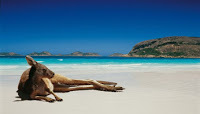

Published on April 19, 2017 15:11
April 18, 2017
19 April 2017 - SOME TRICKY WORDS
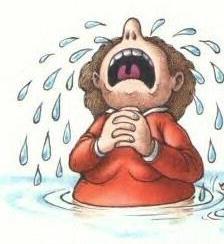
SOME TRICKY WORDS
G'day folks,
Welcome to a few more words that trip us up every now and then.
1. INSURE/ENSUREThese words are easy to confuse not only because they sound alike, but because they both have to do with guarantees. To ensure is to make sure something does or doesn’t happen. To insure is to use a more specific type of guarantee: an insurance policy.
2. DISPERSE/DISBURSEDisperse is more common and has a wider range of meaning than disburse. To disperse is to scatter, separate, or sprinkle around. To disburse is only to give out money.
3. FLAK/FLACKNot many words in English end with ak, but flak does because it’s a shortening of a German word: fliegerabwehrkanone (anti-aircraft gun). Flak is artillery fire, and by metaphorical extension, criticism. The less common flack is for a publicist or someone who tries to drum up attention for a person or product.
4. ALL RIGHT/ALRIGHTThough alrightspelled as one word is beginning to be accepted by a few style guides, it is still considered an error by most. Write it as two words.
5. BATED/BAITEDThe batedin the expression bated breath is related to abated. The breath is reduced, or almost held, in anticipation. It is not baited like a fish hook.
6. ACCEPT/EXCEPTThese words have similar pronunciations, but very different meanings. To acceptis to receive and to except is to exclude. A good way to remember the difference is that to accept something is to acquire it and to except is to cross it out with a big X.

7. ILLUSION/ALLUSIONIllusion is the more common word and usually the one you want. An illusion is a false impression, something that seems real, but isn’t. Allusion is mostly used in literary contexts. It is a hint at something else, or a pointer to other work, such as a character name that refers back to a Shakespeare play.
8. FLOUNDER/FOUNDERTo flounderis to flop around clumsily, like a fish on land. It can be used metaphorically for inconsistent or unproductive behavior. That’s why it’s easy to confuse with founder, which means to sink or fail. If a business is floundering, there’s still a chance to turn things around, but if it’s foundering, it’s best to cut your losses.
9. HEAR, HEAR/HERE, HEREWhen you want to give enthusiastic approval, the correct expression is “Hear, hear!” It came from the sense of hear him out! or hear this! and not from a sense having to do with here, the present location. Here, here!is an answer to “Where should I put this cupcake?”
10. TORTUROUS/TORTUOUSA tortuousroute might also be torturous, but the words have different meanings. Something that is torturous causes torture, while something that is tortuous is merely full of twists and turns. If a route is so tortuous that is it gives you hours of carsickness, then, yes, it is also torturous.
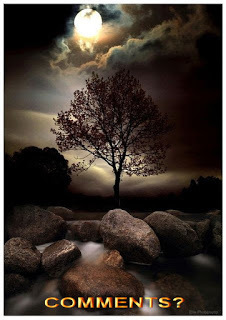
Clancy's comment: Mm ... Might be worth printing these and sticking them on the wall. That's what I do.
I'm ...


Published on April 18, 2017 14:38
April 17, 2017
18 April 2017 - GREAT QUOTES TO READ

GREAT QUOTES TO READ
G'day folks,
Welcome to some more top quotes to get you started for the day.







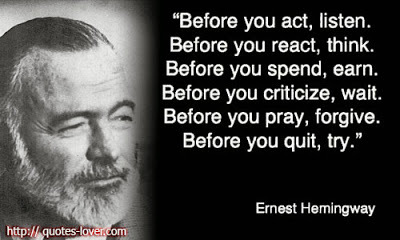
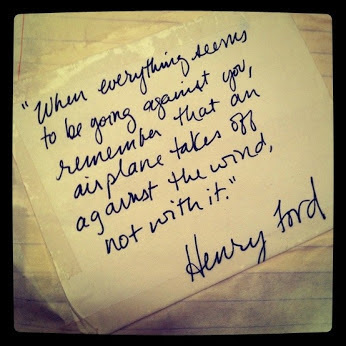





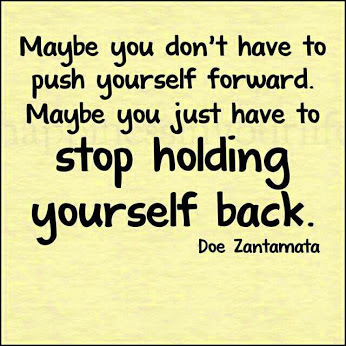
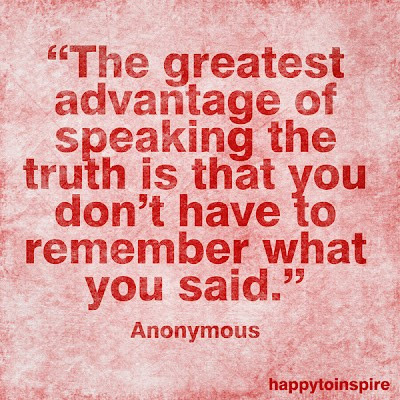
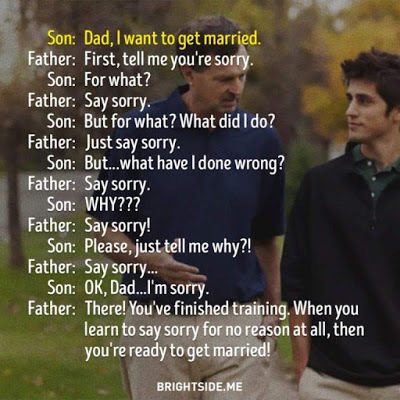



Clancy's comment: Again, some goodies here today.
I'm ...


Published on April 17, 2017 14:05
April 16, 2017
17 April 2017 - PROFESSOR GRAEME CLARK
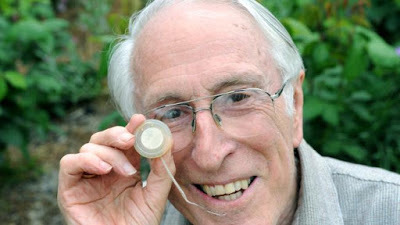
PROFESSOR GRAEME CLARK
G'day folks,
Welcome to some background on a famous Australian scientist and inventor. One of our most distinguished alumni in the field of Otolaryngology is Professor Graeme Milbourne Clark, foundation Professor of Otolaryngology at the University of Melbourne and pioneer of the multiple-channel cochlear implant, the ‘bionic ear’.
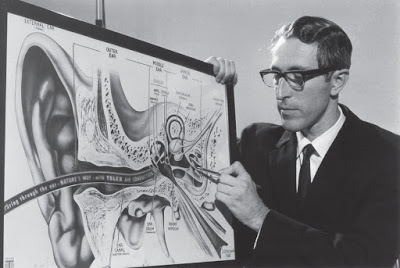
MB BS 1958 MSurgery 1969 Ph D Med 1970 MD 1989 FRCS (Edinburgh) FRCS (England) FRACS Hon MD (Hanover) Hon MD (Sydney) Hon DSc (Wollongong) Hon DEng (CYC Taiwan) Hon LLD (Monash) Hon FAudSA Hon FRCS (England)
Professor Graeme Clark pioneered the multiple-channel cochlear implant which has brought hearing and speech understanding to tens of thousands of people with severe-to-profound hearing loss in more than 80 countries. Graeme Clark graduated from Medicine at the University of Sydney in 1958 and became Resident Medical Officer at the Royal Prince Alfred Hospital (RPAH), Sydney. In 1960, he also became Lecturer in Anatomy in the Faculty of Medicine. By 1961, he had graduated to being Registrar in Neurosurgery and Otolaryngology at RPAH. He went to London in 1962 and was appointed Senior House Surgeon of the Royal National Ear Nose and Throat Hospital in London. He remained in England for four years, working at Bristol General Hospital and the Royal Victorian Eye and Ear Hospital.
When he returned to Australia, Graeme first went to the Alfred Hospital in Melbourne, where he was the first Assistant Ear, Nose and Throat (ENT) surgeon, later becoming Senior Honorary ENT Surgeon. In 1967, he again lectured at the University of Sydney, this time in physiology. In 1969, he served as a Senior Research Officer of the National Health and Medical Research Council of Australia.

Graeme became the foundation Professor of Otolaryngology at the University of Melbourne in 1970, retiring from that position in 2004, when he was made Honorary Laureate Professorial Fellow at the University and became full-time Director of the Bionic Ear Institute.
Graeme had commenced basic research on electrical stimulation of the auditory nerve fibres at the University of Sydney in 1967. His research showed that multiple-channel (electrode) stimulation rather than a single-channel cochlear implant would be required for the management of a severe-to-profound hearing loss. Since 1970, Graeme has led the research on electrical stimulation of the auditory nerves in the Department of Otolaryngology at the University of Melbourne and the Bionic Ear Institute.
This research has demonstrated that a multiple-channel cochlear implant can provide significant understanding of speech for severely-to-profoundly deaf children and adults and enable near normal speech for deaf children through electrical stimulation of the hearing nerves in the cochlea. The research also demonstrated that bilateral and bimodal cochlear implants can enable people with hearing aids and implants to localise sound and hear more effectively in a noisy environment. In a series of studies on experimental animals, he showed that a multiple-channel cochlear implant was safe, with minimal risk of meningitis from middle ear infection, if a fibrous tissue sheath was produced around a single-component multiple-electrode array and this was facilitated with a fascial graft.
It was not previously thought possible to provide speech understanding with a small number of electrodes, as the cochlea (inner ear) is innervated by 10,000 to 20,000 neurons in a complex manner. However, the multiple-channel cochlear implant resulting from the discoveries of Graeme and his co-workers is the first sensori-neural prosthesis to effectively and safely bring electronic technology into a direct physiological relationship with the central nervous system and human consciousness. Graeme also established the surgical and audiological principles that are the basis for its regular clinical use.
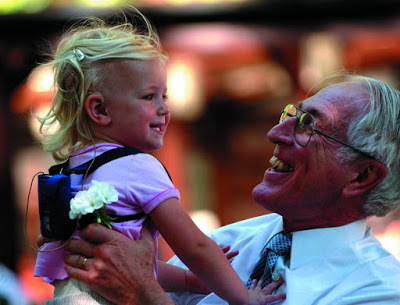
A month after Graeme and his team operated on Rod Saunders to implant the University of Melbourne’s first bionic ear, they asked Saunders to return so they could see whether the surgery had worked and how they could help him understand speech. When they tested him with an electric current, all Saunders could hear was the hissing sound frequently experienced by deaf people. Finally, just before the third hearing test, they discovered a fault in the test equipment, which could account for the lack of results.
Below is an excerpt from Sounds of Silence, describing the third appointment with Rod Saunders:
At the second test session I was eager to find out whether Rod could recognise the voicing and rhythm of speech. To test for these skills, we used the computer to play tunes through the implant. The first was the then national anthem, “God Save the Queen”. Our answer came immediately as Rod stood to attention, disconnecting some of his leads as he did so. It was good to have selected a patient with a sense of humour. Then Jo suggested, “Why not test him with Waltzing Matilda?” Rod had no trouble with that one either. He could recognise the songs he knew, but could he hum the tune of a song that had come out after he went deaf? We found that he could, which was very encouraging.
His work to develop the multiple-channel cochlear implant and take it through to commercial reality took 18 years, from 1967 to 1985, and is outlined in the History of the Cochlear Implant. The cochlear implant originally developed by the Melbourne research team and manufactured by the Australian company Cochlear Limited has held up to 80 per cent of the world market over the last 20 years.

In addition to this research, Graeme has played a key role in the development of the Automatic Brainwave Audiometer, the first method for objective accurate measurement of hearing thresholds for low and high frequencies in infants and young children, and the Tickle Talker™, a device enabling deaf children to understand speech through electro-tactile stimulation of the nerves of the fingers.
Graeme was awarded the AC (Companion of the Order of Australia), Australia’s highest civil honour, for services to medicine and to science through innovative research to further the development of cochlear implant technology for worldwide benefit in 2004.
In 2005, he received the Excellence in Surgery Award from the Royal Australasian College of Surgeons which recognises the highest level of surgical achievement by world standards, advanced innovation in the field, continued quality and worth of the innovation, and the highest standard of ethics. He received the A Charles Holland Foundation International Prize for fundamental contributions to the progress of knowledge in audiology/otology, at the XVIII World Congress of the International Federation of Otorhinolaryngological Societies in Rome. He received the Royal College of Surgeons of Edinburgh Medal for outstanding contributions to medicine at the Quincentenary Ceremony for the Presentation of Diplomas.
Graeme also received the Prime Minister’s Prize for Science, Australia’s pre-eminent award for excellence in science, recognising outstanding achievement by Australians in science and technology to promote human welfare in 2004. He was elected a Fellow of the Royal Society for his contribution to science, both in fundamental research resulting in greater understanding, and in leading and directing scientific and technological progress in industry and research establishments. He was elected an Honorary Fellow of The Royal College of Surgeons of England, awarded for outstanding achievement in medicine. He was elected a Fellow of the Australian Acoustical Society for notable contribution to the science and practice of acoustics, and received the Doctorate of Laws honoris causa from Monash University, its highest honour.

In 2003, Graeme was elected an Honorary Fellow of the Royal Society of Medicine in London for exceptional distinction, with recipients drawn from across the world and from a wide range of endeavours, particularly in the medical sciences. He received the Doctorate of Engineering honoris causa from Chung Yuan Christian University in Taiwan.
In 2002, Graeme was elected an Honorary Member of the American Otological Society. He received the Doctorate of Science honoris causa from the University of Wollongong, Australia. In 1998, he was elected Fellow of both the Australian Academy of Science and the Australian Academy of Technological Sciences and Engineering.
Graeme has received Honorary Doctorate of Medicine degrees from the University of Sydney and the Medizinische Hochschule, Hanover along with many other awards and prizes.

Clancy's comment: A great Australian. A great human. Not many people make such a large contribution to their fellow man. Graeme Clarke has altered countless lives. Well done! Love ya work!
I'm ...


Published on April 16, 2017 14:40
April 15, 2017
16 April 2017 - BEATLEMANIA
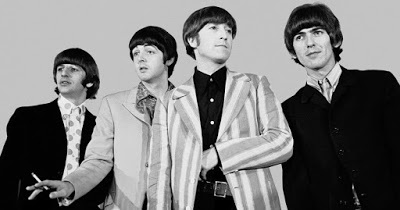
BEATLEMANIA
G'day folks,
No one loved the Beatles more than me. The Beatles were an English rock band, formed in Liverpool in 1960. With members John Lennon, Paul McCartney, George Harrison and Ringo Starr, they became widely regarded as the foremost and most influential act of the rock era.
On the heels of hit singles like “She Loves You” and “I Want to Hold Your Hand,” the legendary British rock band The Beatles first arrived in America on February 7, 1964. After landing in New York to thousands of adoring fans, John, Paul, George and Ringo went on to smash television ratings records with a performance on “The Ed Sullivan Show” two days later. The Fab Four’s invasion of America ended after two weeks, but Beatlemania was only just beginning to grip the nation.
By late 1963, The Beatles—guitarists John Lennon and George Harrison; bassist Paul McCartney; and drummer Ringo Starr—were already a household name in the United Kingdom and much of Europe. More than 15 million viewers had tuned in to their performance on “Val Parnell’s Sunday Night at the London Palladium,” and the band was regularly playing sold out shows to legions of swooning teenage fans. But while they had staked their claim on the top of the singles charts in England, The Beatles still struggled for recognition across the pond. Their first two U.S. singles—the jaunty “Please Please Me” and the catchy “From Me to You”—had flopped, and Capitol Records, the American arm of their label, EMI, appeared uninterested in promoting a foreign band.
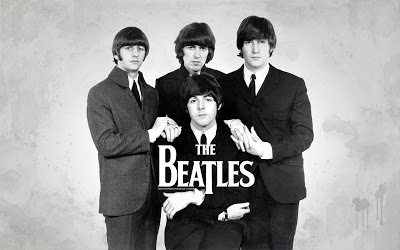
The lads from Liverpool would finally catch a break in October 1963. While passing through London’s Heathrow airport, American television host Ed Sullivan noticed hundreds of excited teens waiting to see The Beatles return from a tour of Sweden. Sullivan had never heard of the shaggy-haired quartet, but after learning about their fanatical following, he felt they had the potential to be as big as Elvis Presley. A few weeks later, Sullivan booked the group to appear on his popular television program.
Armed with a gig on “The Ed Sullivan Show,” The Beatles finally gained traction in the United States. Capitol Records agreed to back their upcoming record, and CBS News anchor Walter Cronkite reported on the Beatlemania phenomenon in England. In early December, a 15-year-old Maryland girl named Marsha Albert saw the group on the news and wrote her local radio station asking, “Why can’t we have music like that here in America?” When a DJ tracked down a copy of their still-unreleased single “I Want to Hold Your Hand,” the song became a massive hit. Capitol Records had to scramble to get the single onto record store shelves, and it went on to sell 1 million copies in a matter of days.
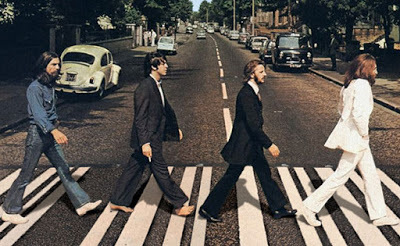
By all accounts, The Beatles still had no idea what was in store for them on February 7, 1964, when they took off from London bound for American shores. Lennon remembered thinking, “Oh, we won’t make it,” while Starr recalled feeling “a bit sick” with anticipation. But when they touched down in New York, the group found themselves greeted by a flock of 3,000 ecstatic, screaming fans—many of them teens playing hooky from school. The band was stunned. “Seeing thousands of kids there to meet us made us realize just how popular we were there,” Harrison later said. In their first press conference, The Beatles appeared relaxed and upbeat.
Clad in matching suits, the band fired back at the sea of reporters with cheeky quips that the New York Times later called the “Beatle wit.” “We have a message,” McCartney declared in between questions about the band’s name and their mop-top haircuts, “buy more Beatles records!”

From the airport, The Beatles were each tucked into their own limousine and whisked away to the Plaza Hotel in Manhattan. Safe from the rabid fans camped out on the streets below, they spent the evening chatting on-air with local radio DJ Murray the K while the brothers Albert and David Maysles—the same filmmakers who later chronicled The Rolling Stones in the 1970 film “Gimme Shelter”—rolled camera for a documentary. The next day brought another round of interviews and photo sessions, but the band also squeezed in a sightseeing tour of New York. Ever the music aficionados, The Beatles insisted on passing through Harlem to catch a glimpse of the famed Apollo Theater.
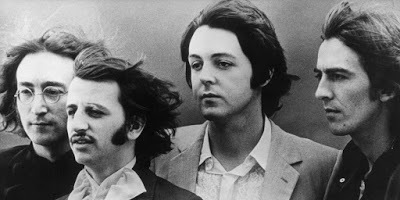
The band arrived at CBS-TV’s Studio 50 on Sunday, February 9 and prepped for their “Ed Sullivan Show” appearance with a filmed sound check. Shortly after 8:00 p.m., Sullivan would finally introduce John, Paul, George and Ringo to America with the now-famous words, “Ladies and Gentleman…The Beatles!” As a packed house of giddy teenagers looked on, the group launched into renditions of “All My Loving” and “Till There Was You” before driving the crowd into a frenzy with the catchy “She Loves You.” The Beatles returned later that evening for a second set featuring energetic versions of “I Saw Her Standing There” and their number one hit, “I Want to Hold Your Hand,” both nearly drowned out by screams of joy from female audience members.
Television ratings for the appearance proved astronomical. According to the Company, a record-breaking 73 million viewers tuned in to watch The Beatles on “Ed Sullivan”—nearly 40 percent of the U.S. population at the time. Some newspapers still tried to dismiss the British hit-makers as a passing fad, but the numbers didn’t lie: Beatlemania had taken the United States by storm.
Riding the wave of their star-making turn on “Ed Sullivan,” the Beatles left New York on February 11 for Washington D.C., where they played their first-ever American stage show at the Washington Coliseum. By now, their popularity had reached dizzying heights. Businesses were selling novelty Beatles wigs and clothing, and the band couldn’t travel without being mobbed by hordes of breathless music lovers.
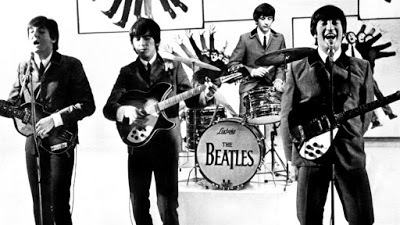
In Washington, their management team had to distract fans with decoy Beatles wearing wigs just to allow the group time to reach the stage. When they later took a train back to New York, their rail car had to be switched to a separate platform to bypass swarms of waiting kids. Some fans came to blows jockeying for a better position in the crowds, and police were forced to contend with teenagers rushing their barricades just to get a chance at touching their heroes. During a gathering in Washington, an overzealous teenage girl even snuck up behind Starr and cut off a lock of his hair as a souvenir. He later remarked that all the attention made him feel like, “something in a zoo.”
Following a pair of shows at New York’s prestigious Carnegie Hall, The Beatles headed south to appear on another episode of “The Ed Sullivan Show” being filmed in Miami. On February 16, they took the stage for their second live television appearance, playing six songs before a rapturous crowd of 2,600. All told, an estimated 70 million people also gathered around TV sets to watch at home. The band spent the next few days taking in the sand and surf around Miami with a small army of photographers and newsmen in tow. They also posed for a now-famous photo op with the boxer Cassius Clay (later Muhammad Ali), who was in town for a championship bout with Sonny Liston.
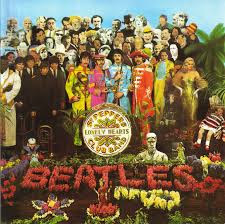
The Beatles would finally leave America a few days later, arriving back in London to a crowd of some 10,000 fans who greeted them like they were generals back from campaign. The “British invasion” of America, as Walter Cronkite had called it, had ended in conquest. Five Beatles songs were entrenched in the Billboard Hot 100—including the top two slots—and their televised performances had broken ratings records. In only two weeks, the band had made an indelible mark on American pop culture. Their shaggy hair, witty interviews and loose, exuberant sound had proven irresistible, and a wave of British bands would soon follow in their footsteps. The Beatles had stepped onto the tarmac at JFK International Airport on February 7 as an overseas oddity, but they left on February 22 as genuine superstars.

Clancy's comment: What an unbelievable group, and bunch of talented individuals.
I'm ...


Published on April 15, 2017 14:59
April 14, 2017
15 April 2017 - JILLY BOWLING - Guest Author
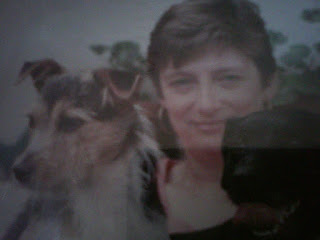
JILLY BOWLING- Guest Author -
G'day folks,
Today, I introduce an author from the United Kingdom.
Welcome, Jilly ...
1 Tell us a little about yourself and your writing journey.I’ve always loved reading and a few years ago joined a writing group. However I just couldn’t find the time to write, I was running my own business at the time and doing the paperwork for my husband’s business.That and two kids made finding time difficult.
2 When and how did you become a writer?I was very ill in 2013 and couldn’t do the things I normally did, ie. bowling, gardening, riding horses and walking. Reading was even tiring, and then this story seeped into my brain and I couldn’t get rid of it so I started to write it down. I called it Scerior. 632 pages later I looked at the pile of paper and thought `what am I going to do with that?` I didn’t type, wasn’t into computers so I taught myself how to do both. While I was doing this another story idea awoke in my head Kate/Katherine. So when I wasn’t typing I was scribbling K/K down. When I’d got my manuscript typed I sent it off to publishers and agents, and I have to admit that I got some great turndowns, it was these that kept me trying. Then I received an email from HOE Andrews UK with a contract enclosed. I researched them and decided to go ahead, and it was then the really hard work started because I have to admit my manuscript was dreadful, full of typos etc. When It was perfect they published it and it came out in 2014.
3 What type of preparation do you do for a manuscript? Do you plan everything or just shoot from the hip?The idea usually starts to worm itself into my brain as I’m finishing the previous book. I think about it for a while I’m doing mundane things then I just start scribbling. I still write in longhand, it’s faster than my typing! Then when I’ve got between 10 and 20 pages I transfer it to the computer, editing as I go. At the end of that session I edit it again, then move on.
4 What do you enjoy most about being a writer?Seeing my ideas take form.

5 What is the hardest thing about being a writer?Finding the time.
6 What were you in a past life, before you became a writer?I’ve done many things. Worked with horses, in a restaurant, business owner, old cottage renovator and wife and mother.
7 What is your greatest writing achievement?I haven’t got there yet!
8 What are you working on at the moment? A book called Broken but Restored, which is three quarters finished.
9 What inspires you?Everything and anything.
10 What genre do you write?Most of my books are cross genre, except for Kate/Katherine which is erotica. But even in that there are many different themes from polo, self defence, business and romance. All my books are love stories with a mix of adventure thrown in. I write about strong feisty women, and strong men.
11 Do you have any tips for new writers?Keep on trying. Don’t be dispirited when you get rejection letters. If your book is good someone will pick it up eventually. If it isn’t make it better, ask people for their thoughts on it and don’t think that you are a genius!
12 Do you suffer from writer’s block?Not yet.
13 Do you have a preferred writing schedule?
No, apart from trying to write on Saturdays.

14 Do you have a favourite writing place?Yes, in my sun lounge overlooking the moor.
15 What is your greatest joy in writing?Holding a paperback of my book.
16 Who is your favourite author and why?I have such a diversity of taste it’s hard to say. I like everyone from Lee Childs to Stephanie Lauren. At college one time the tutor asked that question and I answered as above, and he said `well surely you wouldn’t read a Barbara Cartland?` and I said why not if I had an hour to spare He pooh poohed her until I asked how many books he’d had published.That shut him up and I dropped out of that class. I have found that you can learn from even badly written books, how not to do it, for example.
17 What’s the greatest compliment you ever received from a reader?I couldn’t put it down. When’s your next one out?
18 What’s your worst comment from a reader?Dreadful book, badly written. Then I looked at the reviews she’d given other authors and she didn’t appear to like most.
19 Writers are sometimes influenced by things in their own lives. Are you?Not for my characters, but for background and detail. It’s always best to write about what you know. I quite often have horses in my books, they’re such great background and I know about them.
20 Other than writing, what else do you love?Reading, walking, gardening going out for meals and up cycling things.

21 Did you have your book/books professionally edited before publication?Obviously by the publisher, however they now have so little to do as I’ve learnt very quickly.
22 Describe your perfect day. Walking along the beach or across the moor, then stopping for a meal.
23 If you were stuck on a desert island with one person, who would it be? Why?My husband, because he’d look after me and I’d look after him.
24 What would you say if you had the chance to speak to world leaders?I’m sorry but I couldn’t be bothered to say anything.
25 What are your plans for the future?Write 200 books before I die.
26 What are your views on book trailers? Do they sell books?I suppose they do, to people who are led by the hype.
27 Do you see yourself in any of your characters?No.
28 Does the publishing industry frustrate you? Not now, but at the beginning I described it as `swimming through a pool of sharks`.
29 Did you ever think of quitting?No.
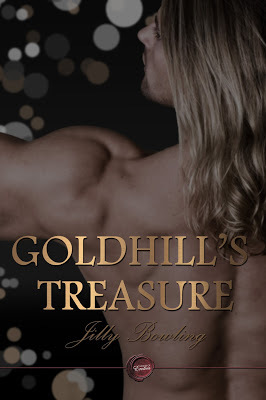
30 What was your favourite manuscript to write? Why?Always the one I’m writing at the moment, but I do have a soft spot for my first. 31 How would you define `success` as a writer?I think this means something different to everyone. I’m happy that I’m published.
32 What should readers walk away from your books knowing? How should they feel? There are many little things in all my books that I’ve learned about over the years. Entertained and wanting more.
33 Would you like to have your books made into movies? Ever written a screenplay?Of course, Scerior 1 & 2 would make great movies and so would Goldhill’s Treasure. No I’ve never written a screenplay.
34 How much thought goes into designing a book cover?I lay out my idea to suit the story but my publishers do the design then send it to me to ok it. Sometimes they have to tweak it, but with Kate/Katherine they hit it first time.
35 What’s your ultimate dream?To hit the bestsellers list.
36 Writing is one thing. What about marketing you, your books and your brand?I’ve always been in marketing but I hate promoting myself. It’s easier if you’re one step removed.
37 Are your books self-published?No, I would never go down that road. I’m of the opinion that if a publisher doesn’t want it, it’s not good enough to publish. I’m afraid I’m not deluded enough to do that.
38 Describe yourself in five words.I won’t be beaten.
39 What pisses you off most?People who are `up themselves.
40 What is the title of the last book you read? Good one.I’m reading a Norah Roberts at the moment The Next Always, it holds my attention. Before that I read a Karin Slaughter, Fractured. I’m becoming less keen on detective stories as I’ve read so many. I love fantasy books as they are unpredictable.
41 What would be the very last sentence you’d write?The end, goodbye.
42 What would make you happier than you are now?To get my health back.
43 Anything you’d like to add?Writing is great as long as you don’t take yourself too seriously. If you do you’re opening yourself up to stress and unhappiness.
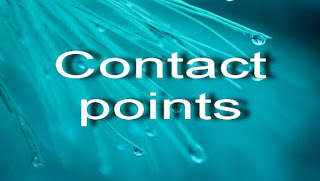
AMAZON

Clancy's comment: Thank you, Jilly. However, your reply to question 37 is very contentious. You obviously are not aware that many famous authors have left mainstream publishers and self-published. Why? They wanted a fair payment for their work, and they wanted more control. But, everyone has a right to their opinions. Good luck!
I'm ...


Published on April 14, 2017 14:11
April 13, 2017
14 April 2017 - THE EUROPEAN BADGER

THE EUROPEAN BADGER
G'day folks,
Welcome to some facts about badgers. The European badger is a species of badger in the family Mustelidae and is native to almost all of Europe and some parts of the Middle East.
Badgers are fantastic diggers. They live in family groups of around six individuals in underground homes known as setts. Setts can consist of many rooms, entrances and tunnels. They keep their living quarters clean and will drag old hay, grass, bracken and plastic bags outside by carrying it under their chin to prevent a build up of fleas and lice.


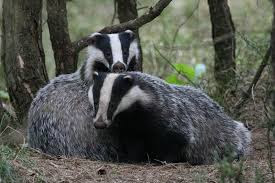

Amazing Facts About the Badger (European)There are eight different species of badger.The word badger is said to derive from the French ‘bêcheur’ meaning ‘digger’.European Badgers are native to almost all of Europe and some parts of the Middle East.A male badger is called a boar, a female is a sow and the young are called cubs. Interestingly, the Welsh name for badgers is ‘moch daear’ which translates to ‘earth pig’.Badgers live in complex underground burrow system called ‘setts’ that they dig themselves. Some can be centuries old, as can the regular paths badgers use above ground!Family groups live together in setts, typically of around six badgers. Setts have a number of rooms or ‘chambers’ some for sleeping in others for having young in. There are a number of tunnels leading to the outside world. The largest sett in Britain was found to extend over 15x35m and had 12 entrances.Badgers are incredibly clean and will not defecate (poo) in their sett – they have special latrines (communal toilets) comprising of shallow pits placed away from the setts on the edge of their territory. They will not bring food into the sett eitherUnlike dogs and foxes, badgers have five toes and very powerful, long claws, particularly on the front feet.Badgers will eat several hundred earthworms every night, but also love insects, bluebell bulbs and elder berries – you can often find these bushes growing near to the setts.Badgers have a keen sense of smell and can dig down for rabbit nests and grubs under the surface.Because they have very thick skin and long claws they are one of the species that can kill and eat hedgehogs!Badger-baiting was once a popular blood sport, in which badgers were captured alive, placed in boxes, and attacked with dogs. In the UK, this was made illegal in 1835.The hair of the European badger has been used for centuries for making sporrans and high end shaving brushes.

Clancy's comment: Mm ... I wonder where the badgering expression came from - 'Stop badgering me'.
I'm ...
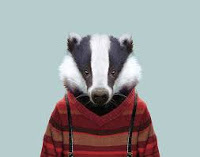

Published on April 13, 2017 14:55
April 12, 2017
13 April 2017 - ROLLING PICTURES
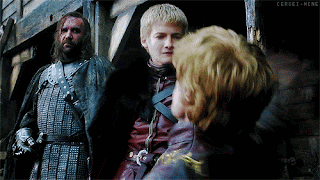
ROLLING PICTURES
G'day folks,
Welcome to your regular dose of rolling pictures.

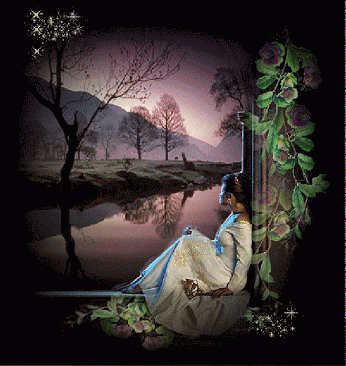


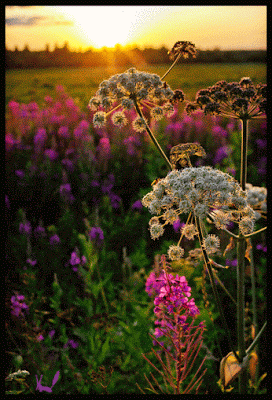
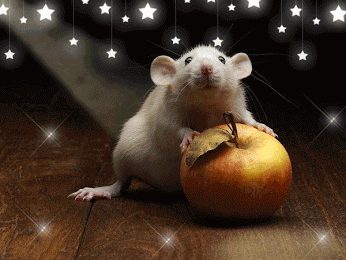

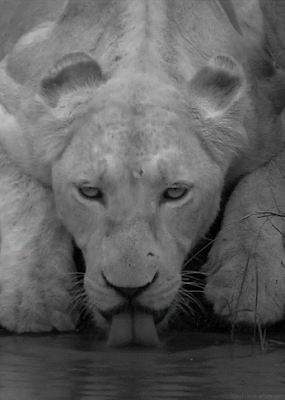


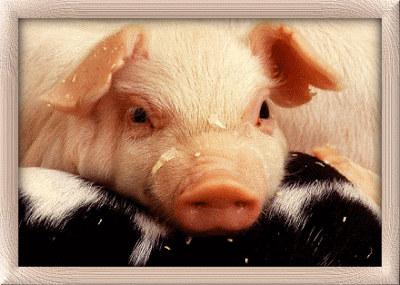


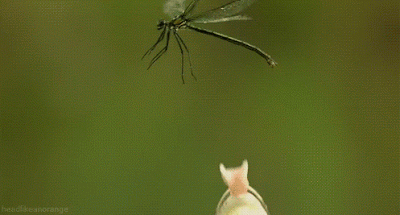


Clancy's comment: Love the frog leaping up for food.
I'm ...
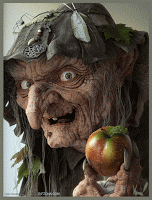

Published on April 12, 2017 14:43



